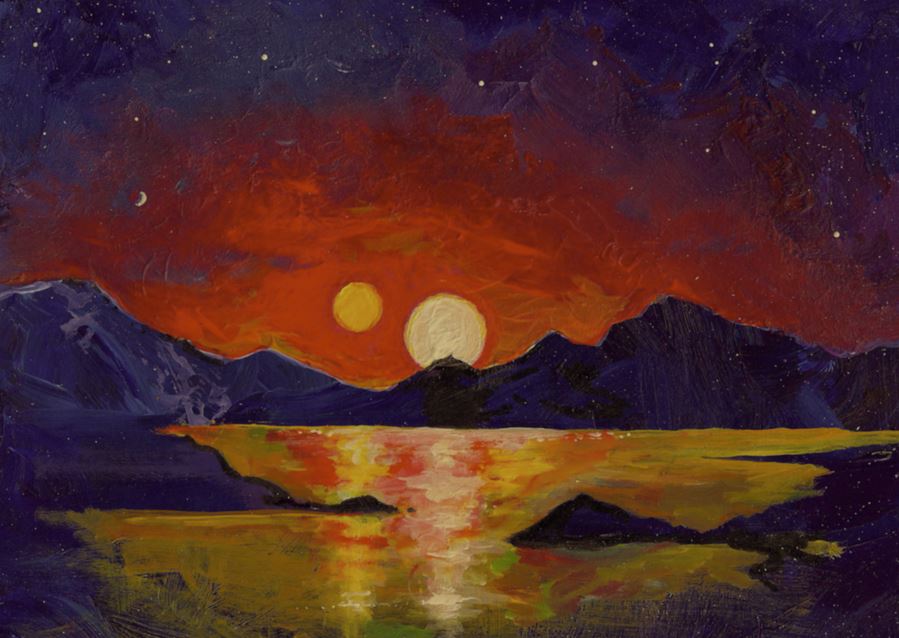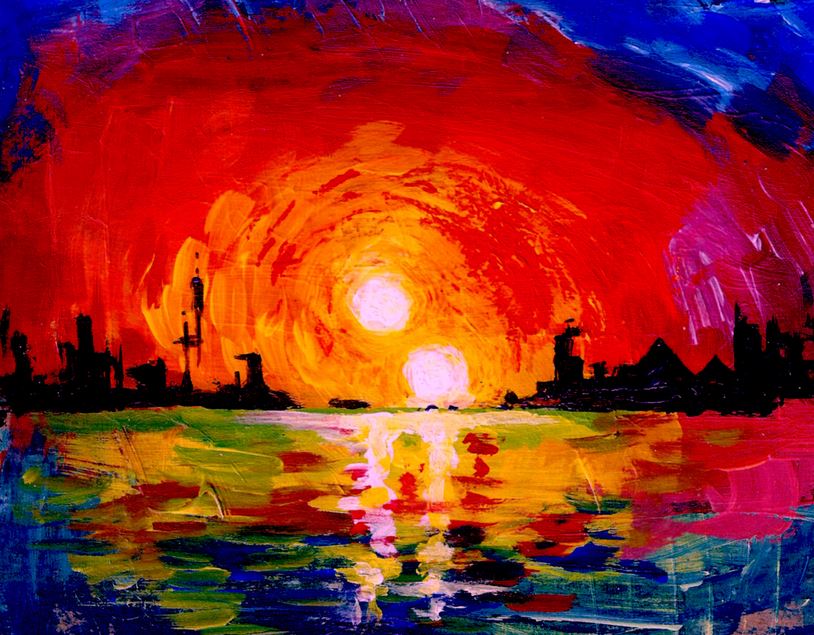Tatooine, a fictional desert planet, Star Wars’ Luke Skywalker’s home, has twin sunsets because it exists in a binary star system (solar system with two stars). Such planets could be widespread across the Universe, scientists from the University of Utah and the Smithsonian Astrophysical Observatory believe.
Before this latest study, astrophysicists said only gas-giant planets could circle binary stars, and not rocky planets like Earth, i.e. they said no habitable planet existed in solar systems consisting of two stars.
Scott Kenyon, of the Smithsonian Astrophysical Observatory, and Ben Bromley of the University of Utah, carried out mathematical simulations that showed that Earth-like, solid planets such as Tatooine probably exist and could be widespread.

An acrylic painting of how Ben Bromley envisions the view of a double sunset from an uninhabited Earthlike planet orbiting a pair of binary stars. (Image: University of Utah)
The scientists, who submitted their findings to the Astrophysical Journal for review, wrote:
“Tatooine sunsets may be common after all. Our main result is that outside a small region near a binary star, [either rocky or gas-giant] planet formation can proceed in much the same was as around a single star.”
“In our scenario, planets are as prevalent around binaries as around single stars.”
The scientists have posted the unreviewed paper on the scientific website ArXiv (citation from Cornell Library below).
With “Star Wars: Episode VII – The Force Awakens” hitting the screens on December 18th, 2015, “fans of the epic series may be cheered at the possible reality of planets like Tatooine, home planet of both Luke and Anakin Skywalker, meeting place of Obi Wan Kenobi and Han Solo and the domain ruled (until his death in battle) by crime lord Jabba the Hutt. Luke stares at Tatooine’s double suns setting in a classic film moment,” the authors wrote.
The study is filled with mathematical formulas describing how two-star systems can be orbited by planetesimals – rocks the size of asteroids that clump together to form planets.

This acrylic painting depicts how Ben Bromley envisions the view of a double sunset from an inhabited Earthlike planet orbiting a pair of binary stars. (Image: University of Utah)
Bromley said:
“We took our sweet numerical time to show that the ride around a pair of stars can be just as smooth as around one.”
The study was funded by NASA’s Outer Planets Program and was a spin-off of Kenyon’s and Bromley’s research into how Pluto and Charon (its major moon) act like a binary system. Both are orbited by four other moons.
Citation: “Planet formation around binary stars: Tatooine made easy,” B. C. Bromley and S. J. Kenyon. Submitted 12 March, 2015. arXiv:1503.03876 [astro-ph.EP].
